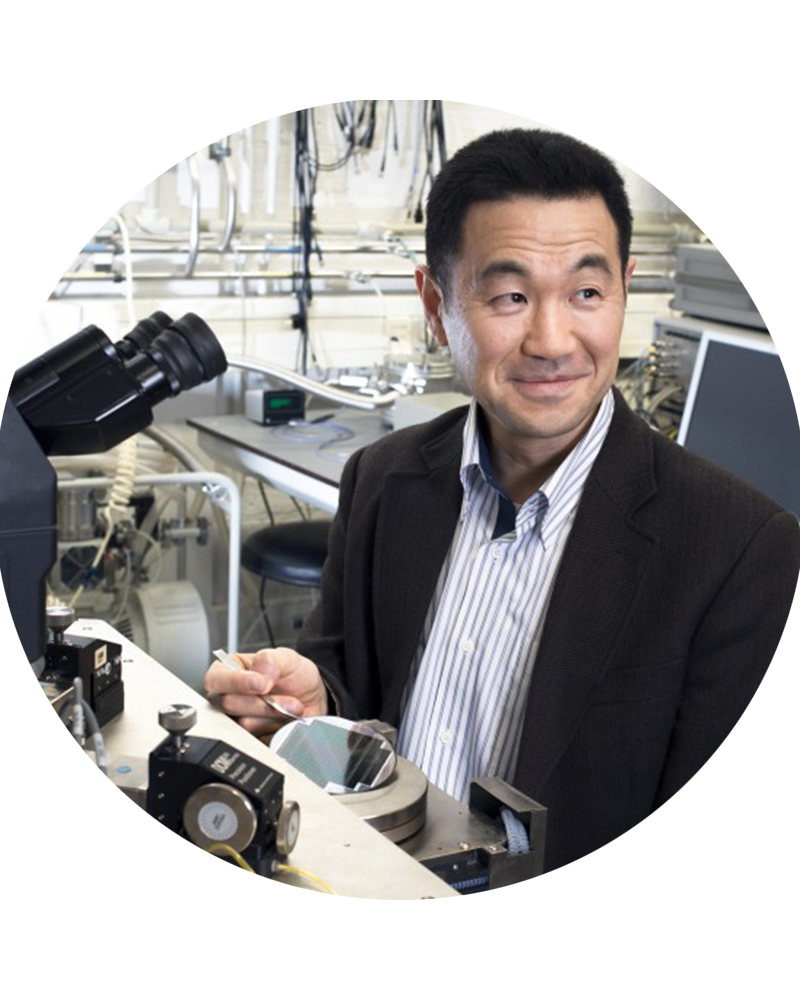PROJECTS IN QUANTUM COMPUTER ENGINEERING
QuTech welcomes students who are driven to work on problems at the very frontiers of quantum technologies.
QuTech works hard to realise a quantum computer and quantum internet. To succeed in this mission, theory and software as well as hardware efforts are required in each of QuTech’s divisions. Students in the second year of their Master’s or third year of their Bachelor’s can apply for a project with one of QuTech’s research groups. The projects are divided over four categories: Quantum Software & Theory, Quantum Hardware & Experiment, Quantum Computer Engineering and Quantum Materials.
Projects in quantum computer engineering allow you to work on the design and implementation of the classical control electronics and system architecture. Projects include design, fabrication and test of cryogenic integrated circuits for the control and read-out of qubits and quantum programming languages, compilers and microarchitecture.
Here you will find the projects in the category Quantum Computer Engineering.
Carmen G. Almudever
Carmen G. Almudever works on the definition and implementation of a scalable quantum computer architecture and more specifically on the mapping of fault tolerant quantum circuits on different qubit topologies. Given that current quantum technologies are error prone, quantum error correction and fault tolerant mechanisms need to be embedded in quantum systems. Furthermore, the limited connectivity between qubits imposes the need for routing of quantum states when 2-qubit gates are performed. The mapping process requires both compiler and architectural support.
Are you interested in a project within Carmen’s group?


Edoardo Charbon
Edoardo Charbon works on classical circuits and systems required to interface with quantum processors and to correct data they generate. His group focuses on cryogenic CMOS (cryo-CMOS) components and architectures and on the challenges of operating them at high speed, low noise, and near-Kelvin temperatures. The ultimate goal is to achieve scalable qubit arrays, so as to demonstrate the speedup achievable in quantum computing. Edoardo’s group, the coolGroup, collaborates with experimental physicists in QuTech’s fault tolerant computing roadmap for the development of a quantum processor and its classical control electronics. Edoardo is a fellow of the Kavli Institute of Nanoscience Delft and an IEEE fellow.
Are you interested in a project within Edoardo’s group?
Ryoichi Ishihara
Ryoichi Ishihara is an associate professor in Electrical Engineering, specialised in thin-film material, devices and 3D integration. Highlights of Ishihara’s career include the first demonstration of TFTs inside large Si grain (1996), the location- and orientation-control of Si crystals (2000, 2006) by laser crystallization, the monolithic 3D-IC using single-grain TFTs (2008), the ultra-high mobility Ge TFTs (2010), and carbon nanotube vertical interconnect via’s (2013), and the first solution processed flexible Si TFTs on a plastic (2013). His current focus in QuTech is on fabrication of scalable qubit and advanced packaging technology for integration of qubit.
Are you interested in a project within Ryoichi’s group?


Fabio Sebastiano
Fabio Sebastiano’s goal is to build the electronic interface to enable scalable quantum computers. He is an expert in the design of analog and mixed-signal integrated circuits, and in the “coolGroup” we apply such expertise to design, fabricate and test cryogenic integrated circuits for the control and read-out of qubits. Operating the electronic interface at cryogenic temperature is an essential step towards scaling up quantum computers to the thousands of qubits required for practical applications. Fabio and the coolGroup work in the QuTech’s fault-tolerant roadmap together with experimental physicists and computer architects to make large-scale quantum computation a reality.
Are you interested in a project within Fabio’s group?

